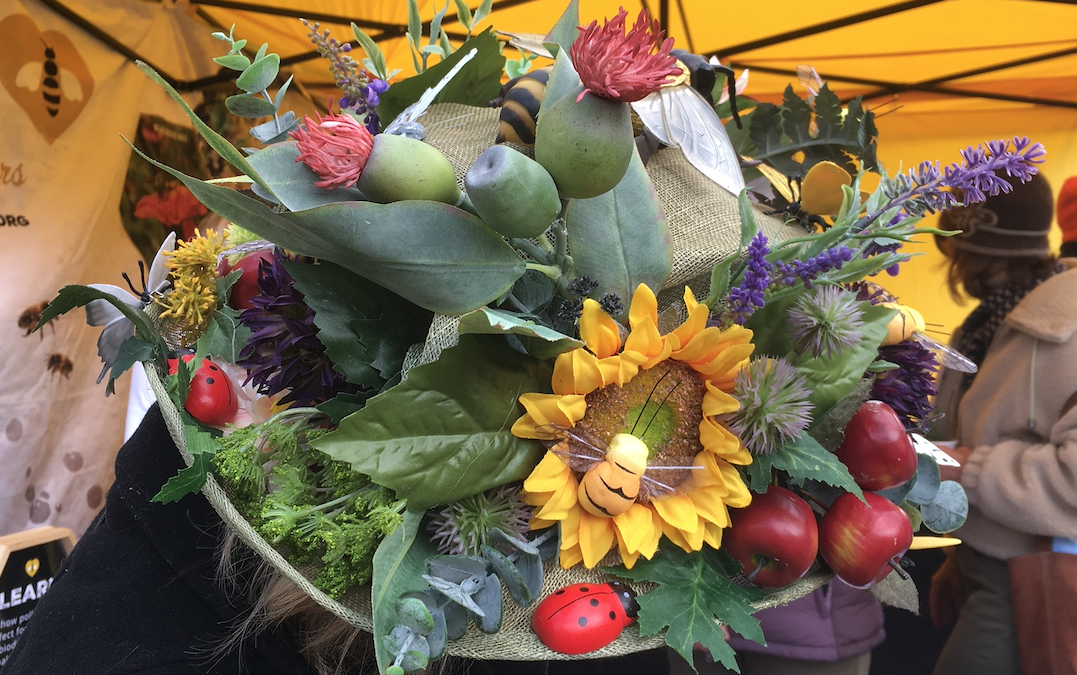
World Bee Day events for healthy bees!
May 7, 2024
Buzzing into Spring
October 7, 2024Towards a Bee and Pollinator Friendly Canberra
We have met with Suzanne Orr, Labor Member of the ACT Legislative Assembly, who has been sosupportive of Labors’ pledge for Canberra becoming a ‘Bee and Pollinator Friendly City’ in the last election. Bee City Canada (https://beecitycanada.org/about-us/) and Bee City USA (https://beecityusa.org/bee-city-usa-commitments/) have clear guidelines on the initiatives to protect and promote pollinators in the community. These include increasing the abundance of native plants, providing nest sites, and reducing the use of pesticides. We spoke about a range of issues to raise awareness of the importance of pollinators, including creating a ‘Planting for pollinators demonstration garden’ in new green field suburbs to educate and guide residents in their planting choices for their gardens and verges.
We also urged Ms Orr to act on the ACT Govt Nature in Our City Report 2018 recommendations, as they were the result of a valuable community consultation process with input from key environmental organisations.
In May 2023, Newcastle Council committed to being a pollinator-friendly city after the first outbreak of varroa mite in Australia by planting native pollinator-friendly plants throughout the city.
We are thrilled that the Wheen Foundation won the coveted global prize – the Golden Bee Award – for its outstanding achievements in the preservation, promotion and research into bees and other pollinators here in Australia and elsewhere. It is the first time that the Award has gone to an organisation outside Europe or the South American continent. The annual award is an initiative of the Government of Slovenia, a country with more beekeepers per capita than any other country and the birthplace of World Bee Day. As part of its work to promote biodiversity, the Wheen Foundation offers grants to schools and other community groups for planting trees. Applications close 15 July, so be quick!
World Bee Day 2024 events
Our World Bee Day celebrations buzzed with lots of activities and fun! Creating bee-friendly environments was the focus at Crace, the masterclass at Parliament House, and the beautiful new Peace Garden at Ainslie. Of course, there were lots of family-friendly activities at the Crace Landcare event and the .beFAIR at the Belgian Embassy. The Embassy of Switzerland hosted a screening of the documentary film Honeyland about Europe’s last wild beekeeper in Macedonia.
Our Treasurer, John, was part of the Capital Region Farmers Market crew, highlighting the importance of bees for food security (image courtesy of Wheen Bee Foundation).



Varroa Mite
Why are we concerned about this parasite? Varroa kills bees, it’s that important not only for the bees but for us too. This parasite feeds on bees and can introduce up to twenty viruses. Bees have an exoskeleton when a varroa feeds on a bee this creates permanent holes in its skin, and this is how viruses are introduced, in addition to weakening the bee by being fed on.
Let’s review the varroa mite lifecycle. A mated female enters the hive on a field bee returning to the hive. The mite drops off this bee inside the hive and makes her way to the brood chamber Once there she enters a brood cell and hides under a young bee larva. When a nurse bee caps the cell, six hours later the mite lays an egg the first egg is a male. Then she lays female eggs every 30 hours, around 6 eggs. These eggs hatch varroa and feed on the bee larvae. These mites mate when mature. When the bee emerges from the cell all the mated females leave with this bee and attach themselves to other bees in the colony. The mites that remain including the male die and are cleaned out of the cell by nurse bees. The mother mite that started this will repeat this cycle 5 to 7 times and live up to 2 months before she dies.
How do we stop varroa mites, several different methods are being employed around the world.
- Hard Chemicals
- Soft Chemicals
- Heating the hive brood frames
- Hygiene queen bees
Hard chemicals or miticides. We have a list of several chemicals that the Department of Primary Industries is authorizing beekeepers to use here in Australia. The first chemical used in the USA was check mite, it killed 95 percent of the mites in a hive and could only be used when the temperature was in the right range, and there was no honey flow. It was ok for 3 years before the mites developed a resistance to it. The USA has created a long list of new chemicals and will continue to try and find more. With this approach, it will never end with a cocktail of poisons being used year after year.
I strongly object to a hard chemical approach to control varroa for the following reasons:
- Whatever poison chemical you use the mites will develop a resistance to it. Every 3 years you will have to find a new poison chemical.
- It can only be used when the temperature is within the right range, cost, and time-consuming.
- It can kill the queen bee or reduce her egg-laying capability.
- Cannot be used during the honey flow.
- It contaminates all the beeswax in the hive with this poisonous chemical. As you add more chemicals the beeswax will accumulate a cocktail of poison chemicals.
- Exposes beekeepers to poison chemicals.
Soft chemicals are mostly essential oils, the varroa mites dislike them, and this impacts the varroa mite’s lifecycle. It reduces the mites, but overall, it is not that effective.
Heating the brood frames. The Swiss have come up with a great idea. The brood chamber is kept at 36 degrees to raise young bees. Heating the brood frames to 42 degrees for 3 hours kills all varroa but not the young bees. This process is repeated every 16 days. This is a great approach – I am just concerned about the cost.
Hygiene queen bees. I see this as the best, and the only valid long-term solution. With hygienic bees, the nurse bees can detect the varroa mites in the young bee’s cell. The nurse bee opens the cell removes the bee larvae and ejects that along with the varroa mites out of the hive. Then clean the cell and the queen bee returns and lays an egg. This stops all varroa mites within that hive. The genetic ability to detect varroa mites is a game changer. There are several countries around the world spending considerable time and money on this solution.
Let us all hope that hygienic queen bees will be available to all beekeepers in Australia soon. Not only for the bees but for us too.
Mark Paterson
Beekeeper extraordinaire and ACT for Bees Vice President
Still on varroa mite……
Orange Beekeepers, (that’s the town, not a colour!) have launched their own group which will look at ways to keep bees safe using natural beekeeping methods. If you’d like to know more, check out the Bee Natural Beekeeping Varroa Warriors on Facebook or email BnBVarroaWarriors@wpactforbees
And a related article on Varroa mite from Penn State University discusses pest treatments.
Another pest that adversely affects beekeeping, forestry and horticulture is the European wasp, which seems to be staying longer in our region with the milder weather. The European wasp can potentially disrupt native ecosystems by taking food sources away from native species and disturbing the natural food chain. They are also are serious threat to human health. There is a serious problem with European wasps in the Braidwood region, so please be vigilant.
Interesting Links
Canberra Environment Centre
Although winter is upon us, now is the time to think about what to plant in spring to support pollinators. In this podcast from the Canberra Environment Centre, Julie talks about her journey into being an advocate for pollinators through ACT for Bees + Other Pollinators, deepening our nature connection through care for native bees in our gardens and communities.
Ginninderry
As regular readers know, we have worked closely with Ginninderry for years. Ginninderry is the only Canberra suburb to have been designed and planted to support pollinators. As explained in this article, what’s good for pollinators, is also good for humans.
UK Websites
Two websites from the UK of interest, both offering webinars about pollinators and other invertebrates. The first, The Biological Recording Company has a range of materials on research into invertebrates, recording biological sounds and biodiversity. There are webinars on bees, butterflies and moths as well as webinars on earthworms, spiders and biodiversity. Check it out!
The Buzz Club is a citizen science project run by the University of Sussex to raise awareness about the decline in insect populations and to promote scientific evidence of actions which will support insect populations in private places such as home gardens.
Michigan State University Research
We know that bees are clever insects, and a new study shows that they might be able to assist in the early detection of lung cancer. Read more
PennState
What do poetry and insects have in common? A study from the Penn State University shows that humans have been fascinated by insects for centuries – and been offput by others! The insects which evoked strong feelings in humans included butterflies and moths, wasps, bees and ants, mosquitos and hoverflies, beetles and grasshoppers and crickets, cicadas and dragonflies. Read more
A few interesting books……
Books for younger readers
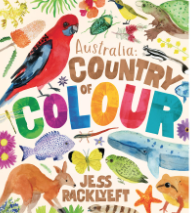
Australia: Country of Colour
by Jess Racklyeft
Bestselling creator Jess Racklyeft celebrates Australian animals, plants and landscapes through the lens of the colour wheel. With its vivid red dirt, big blue skies, wild green bushland and golden sandy beaches, Australia is a country of extraordinary colour and this book is a celebration of the stunning plants and animals of our country.
Suitable for 3+ years.
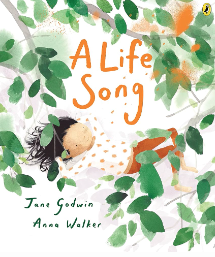
A Life Song
by Jess Godwin & Anna Walker
From the award-winning team that created classics such as Don’t Forget, All Through the Year, Tilly and Starting School, comes a picture book that carries us through a child’s life journey on the magical metaphor of song. Jane Godwin and Anna Walker have created another beautiful picture book.
Suitable for 5-7 years.
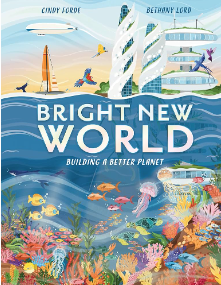
Bright New World: Building a Better Planet
by Cindy Forde & Bethany Lord
A new take on environmental and social awareness that focuses on the amazing possible future from US writer Cindy Forde and illustrator Bethany Lord. Originally published in 2022, Bright New World is a lavishly illustrated glimpse into a future of solar-powered vehicles, regenerated rainforests, skyscraper farms, insect-based snacks, recovering coral reefs, wave-powered electricity, and much more. Bright New World‘s vision may be bold and optimistic, but everything in the book is based on genuine science, including many projects which are currently being developed.
Suitable for 8+ years.
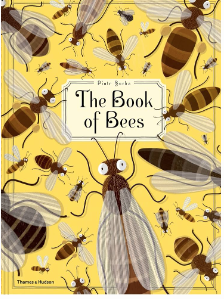
The Book of Bees
by Piotr Socha
This encyclopaedic book was published some years ago now and remains a wonderful resource even though it’s focus is on the northern hemisphere.
Piotr Socha tracks the history of bees from the time of the dinosaurs to their current plight, examining along the way the role bees have played in history and in the rest of the natural world.
Beautifully illustrated and written.

